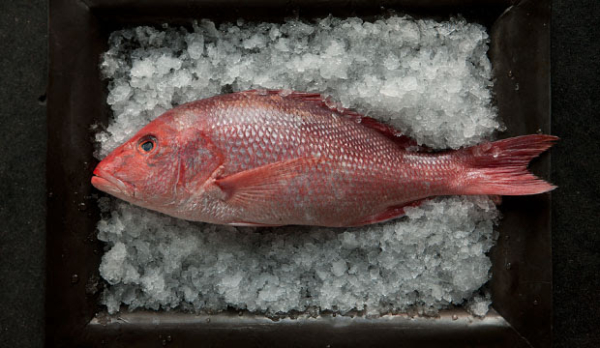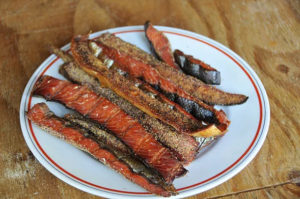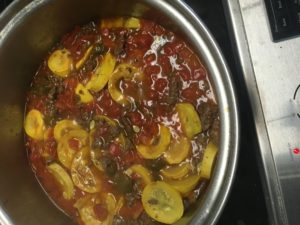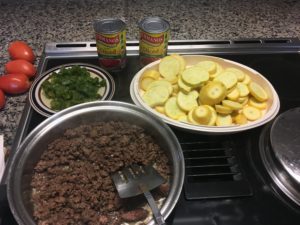Panfish Delish: Catch & Cook
One of the most accessible groups of fish across the country are the various panfish species. They can be found just about everywhere and are generally prolific and tons of fun for all ages to target. Bluegill, crappie, perch, and other similar species are also some of freshwater’s best-tasting fish.
Two popular fishing guides, Western New York’s Capt. Joe Fonzi and Wisconsin’s Jeff Evans each spend a good portion of their seasons guiding for panfish, which end up making an excellent meal for their clients. Both shared insight into their favorite species, how to catch them, and their secrets for cooking the best-tasting fish.

It’s Crappie for Evans
Evans began with a borderline sacrilegious statement about his preferred fish to eat in a walleye-crazed state like Wisconsin. His choice is the crappie.

“I’ve told people I would trade a walleye for a crappie every day, especially fresh crappie; it’s hard to beat,” he said. “I love eating crappie, and they are so much fun to catch. After they spawn and transition to the deeper weed edges and weedy points, they will usually be in those places until they head to the basins in the fall.”

Targeting weed lines, Evans said it’s hard to beat a small 1.5-inch tube jig on a slip bobber. “It’s tried and true, we probably catch 90 percent of our crappies that way,” he said. “We try all sorts of colors but always seem to come back to pink and white. This rig is something we use all season long; it’s a super versatile way to fish because you can easily adjust your bobber for the depth.”
Evans also likes the rig for its ease of use in all weather conditions. “It’s great because if you have a breezy day, the waves will give the bait for the action you need, and then when it’s calm, you can pull the rod and get the action,” he said. “It keeps the bait right in front of the fish.”
Fishing lightweight 1/32 and 1/64-ounce heads can be tricky to keep the bait down, so Evans has learned to add a 1/8-ounce egg sinker a foot above the bait and connect his mainline and leader to a barrel swivel.

“That’s a great way to keep your bait below the surface, but it also helps with casting so you don’t tangle the slip bobber as much,” he said. “I like to use a 1/8-ounce Thill Wobble bobber and adjust the slip to the weight. For my mainline, I like 15 lb Seaguar Smackdown in the Flash Green color. It casts incredibly far and is good at holding the slip knot in place.”

Evans utilizes a 12-inch section of Seaguar Gold Label fluorocarbon leader material between the barrel swivel and tube jig. “6 lb is perfect for crappie because it’s such a thin diameter and gives you a nice natural finesse presentation for your jig,” he said.

Early and Late Season Perch
Primarily fishing Lake Erie out of Buffalo, New York, Capt. Fonzi is a well-accomplished smallmouth bass angler and a premier trophy bass guide, but perch are also a big part of his guiding business.

“Perch are the main target for me in April and then again in September and October,” said Fonzi. “Both times of year are in the same areas and deep; in the spring, our fish will spawn as deep as 50 feet of water, which most people don’t realize,” he said. “They come into those areas again in the fall and will stay there all winter until we pick back up the next spring.”
These areas that he’s looking for are breaks and depth changes. “In most lakes, perch spawn on the edge of weeds, but we don’t have that in Erie, and instead, they use the rocks and vertical structure of the depth changes,” he said. “They’ll use these same areas in the fall to feed up on baby gobies. Those elevation changes hold tons of baitfish, and the perch gorge on them and eat like pigs.”
Targeting depths around the 50-foot range, Fonzi’s most productive setup is a double drop-shot rig with either live shiners or small soft plastic baits.

“What works well is a 4-inch Yamamoto Senko cut in half; they eat the heck out of those in the white colors or chartreuse with gold flake,” he said. “I like to use as light of a drop-shot weight as possible and will start with a 5/8-ounce weight but will adjust if I need to based on the wind and waves. I’ll also adjust my leader length on the hooks based on how the fish act; some days, the first hook could be only a few inches above the weight, and other times, it could be higher if the fish are suspended chasing baitfish.”
His line setup is a 10 lb Seaguar Smackdown braid and a leader of 10 lb Gold Label fluorocarbon. “We may get a few more bites with a lighter 6 or 8 lb leader, but fishing this way, you run into a lot of big walleye and bass as well, which gives me some added strength to land those as well,” he said. “The other thing you run into is constantly swinging two jumbo perch at the same into the boat over and over, which can stress your line, so the heavier leader helps and won’t break.”

Cooking Your Catch
When targeting crappie, Evans is cautious and limits how many he and his clients bring home each trip to protect the fishery. He’s a fan of a good old-fashioned fish fry and has narrowed it down to how many filets it typically takes to feed each person in attendance.

“It’s hard to beat fried crappie, and it always seems to work about four filets per person since some won’t eat that many, and others will eat more,” he said. “Having a fish fry at the end of the day is a great way to celebrate your day on the water, but I also don’t take too many because our lakes can be susceptible to overharvesting, especially with all of our new technology for electronics. I never take more than ten fish home, even though the limits are much higher.”
Every lake is a little different in size, but Evans says generally, crappie between 8 and 11 inches are perfect for a fish fry, and he’ll release the bigger ones. One trick he learned to get great-tasting fish is to utilize hot sauce.
“If you dip the filets in Frank’s Red Hot and then coat them in whatever crumbs you prefer to use right before going into the hot oil, they taste incredible,” he said. “It’s not too spicy after they are cooked, but the flavor is incredible.”
Fonzi prepares his perch in many ways, but one of his most often requested meals is fried perch sandwiches. “I like to mix either House Autry, Shore Lunch, or Uncle Buck’s fish fry seasoning half and half with Italian-style breadcrumbs,” he said. “Then I’ll enhance the mix with some Romano cheese, extra Italian seasoning, or garlic powder. Then, I’ll dip the filets in egg and place them into that mixture. It helps fill the voids in the filets, and they turn out crispy and crunchy when you fry them.”
He finishes the sandwich with a slice of American cheese and homemade tartar sauce made of Miracle Whip, relish, and lemon pepper as the dressing on top.
Catching panfish is always a good time as you can often get into large numbers and catch them quickly. The reward for catching them is an excellent meal at the end of the day, and their great-tasting filets keep anglers returning for more.

Seaguar Smackdown braid is available in high visibility Flash Green and low visibility Stealth Gray. It is available in 150- and 300-yard spools in sizes ranging from 10 to 65 lb tests.
Seaguar Gold Label Fluorocarbon leader is available in 25- and 50-yard spools in 2, 4, 6, 8, 10 & 12 lb tests for freshwater use, complementing the 15, 20, 25, 30, 40, 50, 60, and 80 lb test leaders available for saltwater.







